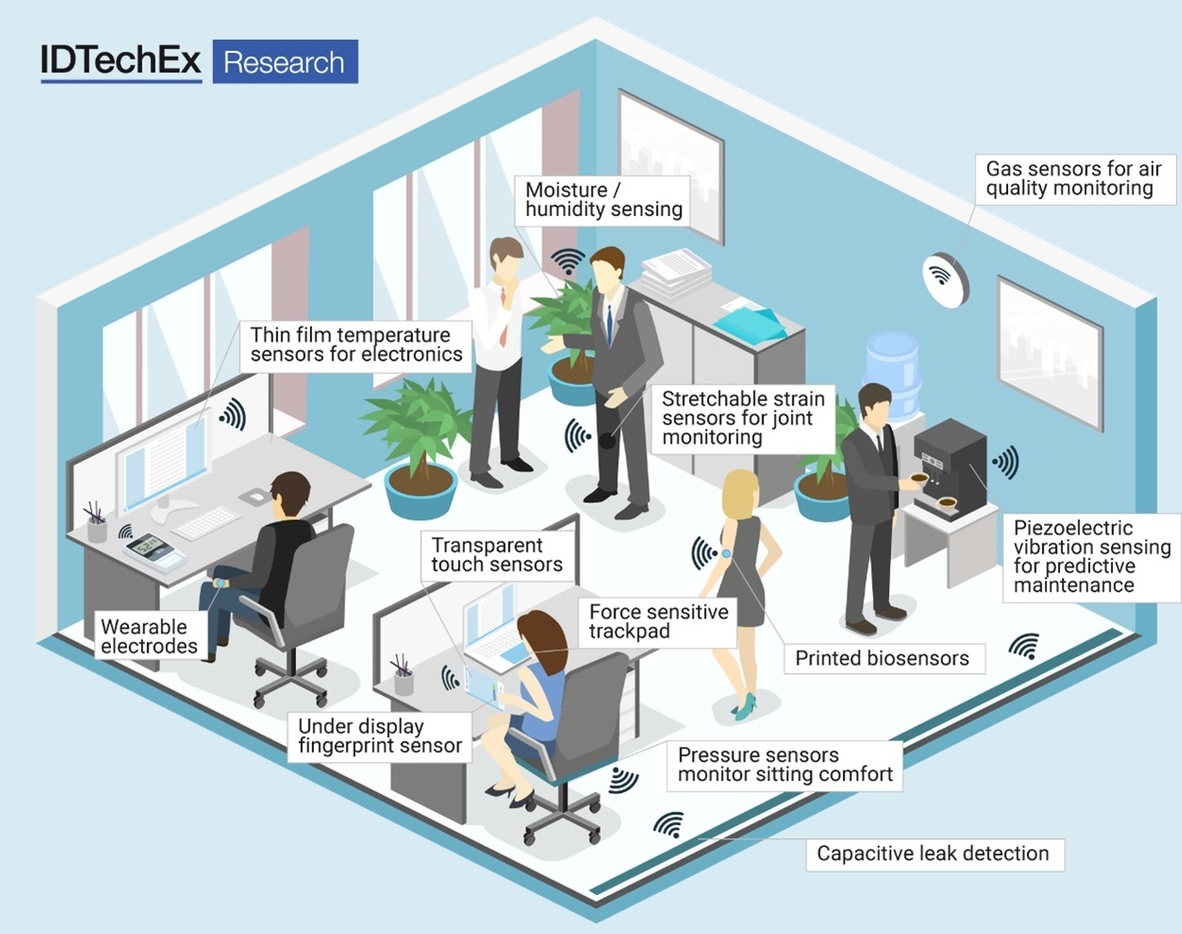Printed and flexible sensors for all modalities - alongside displays - have the greatest market potential in printed electronics. British market researcher IDTechEx predicts a global market volume of USD 4.9 billion by 2032. So far, printed blood glucose test strips have accounted for the lion's share. These are the findings of a new report 'Printed and Flexible Sensors 2022-2032: Technologies, Players, Markets', which covers all current sensors - such as piezoresistive and piezoelectric sensors, as well as photodetectors, temperature and touch sensors, strain sensors, gas and biological sensors and electrodes for wearables.
Printed sensors are already proving themselves as substitutes for traditional technologies in a wide range of applications, such as image capture and wearables, and must overcome their technological and commercial strengths on the way to new mass markets. According to IDTechEx, several factors are driving the adoption of printed and flexible sensors. Industrial initiatives such as 'IoT' and 'Industry 4.0' appear to be the most important, as these involve extensive wireless networks with extremely low cost approaches. The compact size of printed thin-film sensors also plays an important role here, for example in health monitoring.
Capacitive, including transparent, touch sensors are now widely used in smartphones and tablets, with practical innovations expected in conductive materials for larger displays. Piezoresistive force sensors, currently used in car seats, musical instruments and medical devices in addition to industrial devices, could develop further, for example into 3D touch panels for measuring applied forces as gesture recognition. Future applications lie in smartphones, computer games and automotive interiors. Gas sensors are undergoing continuous innovation in industrial contexts, particularly in air pollution control and food monitoring. Printed temperature sensors can be realized with special inks or Si nanoparticles. However, there is tough competition here with the tried and tested thermistors and resistive temperature detectors.
Printed sensors will prove their worth wherever they can exploit their flat and lightweight design, flexibility and easy integration into existing applications, for example in medicine or in battery monitoring for electric vehicles.


